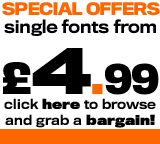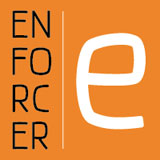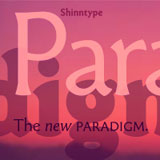| ||||||
 |
 |
|||||
| ||||||||||||||||||||||||||||||||||||||||||||||||||||||||||||||||||||||||||||||||||||||||||||||||||||||||||||||||||||||||||||||||

Helvetica - Overview and BackgroundHelvetica is probably the most popular and widely used typeface ever created and continues to be one of the most sought after and frequently specified sans-serifs. It has clean lines, neutrality and great clarity that make it perfect for a wide variety of applications from corporate identity to newspapers, signage and advertising. Helvetica was originally known as Neue Haas Grotesk and was designed in 1957 by Max Miedinger for the Haas Type Foundry based in Switzerland. In 1960 the name was changed to Helvetica (an daptation of "Helvetia", the Latin name for Switzerland). Following the original Max Miedinger design, a number of additional Helvetica versions were created by a variety of designers that include: Helvetica Compressed, Helvetica Textbook, Helvetica Inserat and Helvetica Rounded. In 1983 D. Stempel AG & Linotype gave Helvetica a complete overhaul and produced updated versions called Neue Helvetica also know as Helvetica Neue. Click on Neue Helvetica for more information. Download the Helvetica fonts.pdf here. Links to popular alternative Helvetica cuts can be found further down the page. Helvetica - Buying ChoicesHelvetica World Helvetica World is a specially created version of Helvetica that supports Latin, Arabic, Cyrillic, Greek, Hebrew and Vietnamese all from within a single font (effectively combining a suite of fonts in one file). This extensive language support is made possible by exploiting the capabilities of OpenType font technology and unicode. Each Helvetica World font contains 1,866 different characters that include the following Microsoft code pages: 1252 – Latin 1, Western European Helvetica World is available in a choice of four different fonts. Helvetica World – Buying ChoicesHelvetica – Popular Alternative Cuts Apart from the ever-present Arial, there are many alternative typeface designs that are extremely similar to Helvetica and indistinguishable to the untrained eye, however, there will be small spacing and character design differences, character sets also vary. These alternative products also have different licensing terms, if you require licensing advice please contact us for further information. Popular alternatives: Aktiv Grotesk (Dalton Maag)
– Helvetica Rounded |
|
|||||||||||||||||||||||||||||||||||||||||||||||||||||||||||||||||||||||||||||||||||||||||||||||||||||||||||||||||||||||||||||||
 |
Web Development by Go Live UK |































